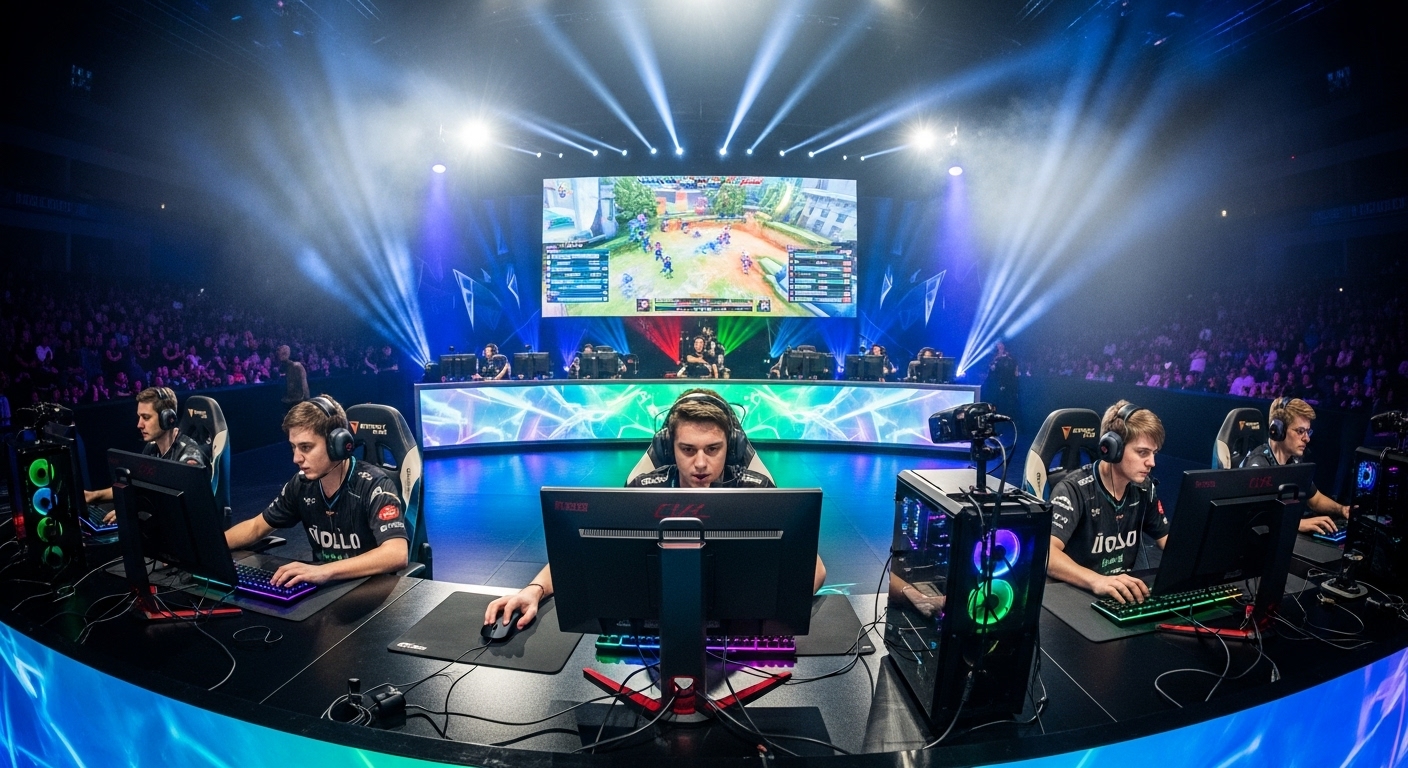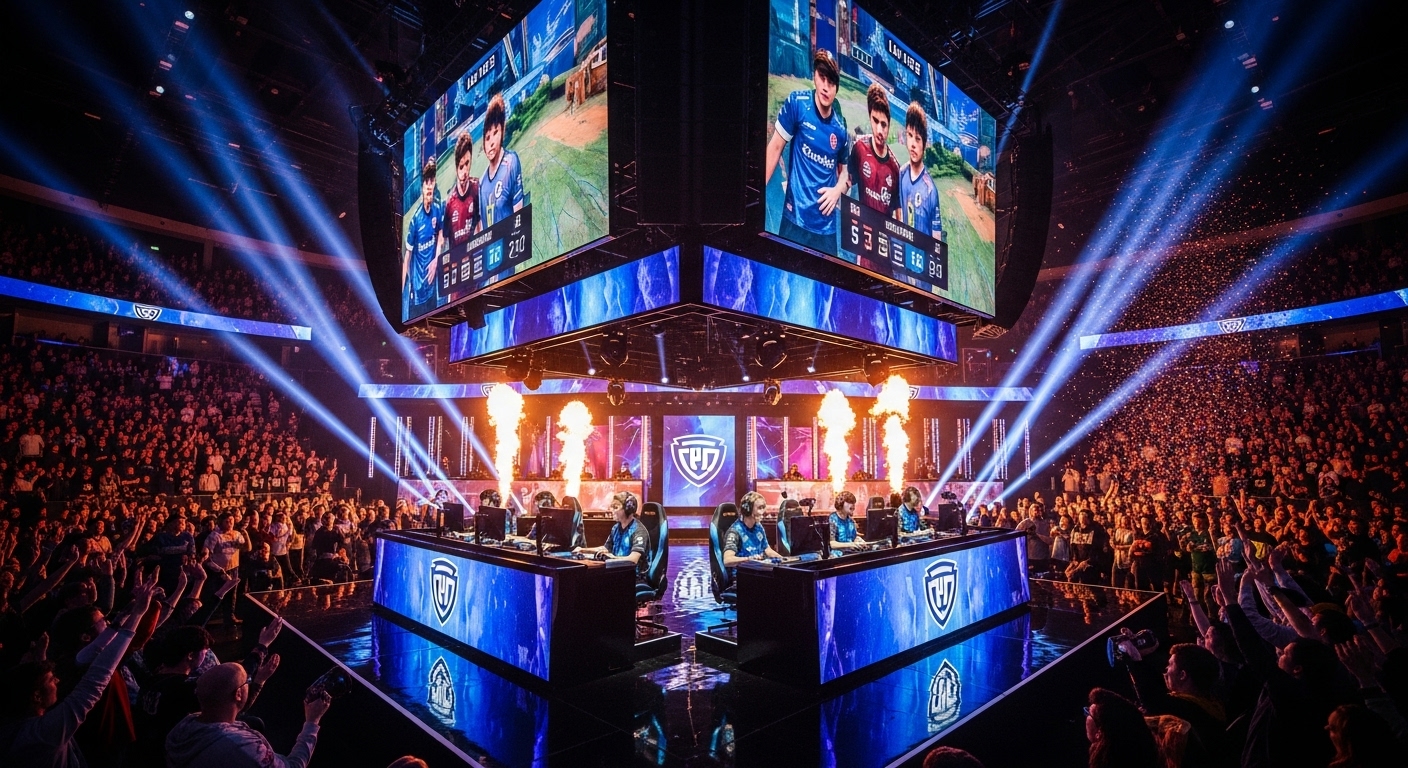Esports, short for electronic sports, has evolved from a niche hobby to a global entertainment phenomenon, captivating millions of viewers and players worldwide. What was once seen as a pastime for tech enthusiasts has now become a multi-billion-dollar industry that has not only reshaped the landscape of competitive gaming but also influenced culture, business, and even traditional sports. As technology advances, esports continues to push the boundaries of what’s possible, creating a dynamic and exciting world where players, teams, and fans are at the heart of a digital revolution.
The Growth of Esports: From Humble Beginnings to Global Stage
Esports has come a long way since its inception in the early 2000s. The first esports tournaments, such as the early iterations of the “World Cyber Games” and “Electronic Sports World Cup,” were modest, attracting a small but dedicated following. However, the rise of high-speed internet and better gaming technology provided a platform for players to showcase their skills and build careers around competitive gaming.
The turning point for esports came with the launch of multiplayer games like “StarCraft,” “Warcraft III,” and later, titles such as “League of Legends,” “Dota 2,” and “Counter-Strike: Global Offensive.” These games offered a competitive structure that enabled players from around the world to engage in large-scale tournaments, and with the advent of streaming platforms like Twitch, viewers could now watch these competitions in real-time, further fueling the industry’s growth.
Fast forward to today, and esports has grown exponentially. It has become a cornerstone of modern entertainment, with games like “Fortnite” and “Valorant” drawing in millions of viewers, and esports events being broadcasted on major sports networks. Esports is no longer a subculture; it is a legitimate global industry that rivals traditional sports in terms of viewership, prize money, and sponsorship.
The Competitive Nature of Esports: More Than Just a Game
At its core, esports is all about competition. Players and teams battle it out in online or offline tournaments, showcasing their skills, strategies, and reflexes in a variety of games. While the genres vary—from first-person shooters like “Call of Duty” and “Overwatch” to strategy games like “Dota 2″—the central element remains the same: the drive to win.
Unlike traditional sports, esports does not require physical prowess. However, this does not mean that esports players lack skill or dedication. In fact, the level of mental acuity required to excel in esports is extraordinary. Esports players must have the reflexes of a professional athlete, the strategic mindset of a chess master, and the stamina to perform under intense pressure. Training for esports is no less rigorous than training for traditional sports, with players spending hours each day practicing and analyzing gameplay to improve their skills.
The rise of esports as a competitive sport has led to the establishment of professional teams, coaches, and analysts, mirroring the structure of traditional sports organizations. Teams like Team Liquid, Cloud9, and G2 Esports have become household names, attracting top talent from around the world and competing in high-stakes tournaments for massive cash prizes. These tournaments are often held in large arenas or broadcasted online, with millions of viewers tuning in to watch the action unfold.
The Esports Ecosystem: Key Players and Stakeholders
The esports ecosystem is made up of several key players, each of whom contributes to the success and growth of the industry. These players include game developers, esports organizations, professional players, streaming platforms, and sponsors. Together, they create a vibrant ecosystem that drives the competitive gaming scene forward.
Game Developers
The backbone of the esports industry is the game developers who create the titles that become the foundation for esports competitions. Companies like Riot Games (with “League of Legends”), Valve (with “Dota 2” and “Counter-Strike”), and Blizzard Entertainment (with “Overwatch”) have all played a pivotal role in shaping the competitive gaming landscape. These developers not only create the games but also design the mechanics and structures that support competitive play, such as ranking systems, tournaments, and in-game rewards.
Esports Organizations and Teams
Esports organizations are entities that manage teams of professional players, providing them with support, sponsorship, and training. These organizations often sign top-tier players to contracts, helping them secure a place in major tournaments. In return, the organizations build their brand and attract sponsorships and merchandise sales. Some of the most successful esports organizations, such as T1, Fnatic, and Team SoloMid, have become global brands, with dedicated fan bases that rival those of traditional sports teams.
Professional Players
At the heart of esports are the professional players, individuals who dedicate their lives to mastering a particular game and competing at the highest level. These players are often highly skilled and can make substantial earnings through prize money, sponsorships, and streaming. In fact, some top-tier esports players can earn millions of dollars annually, comparable to the salaries of professional athletes in traditional sports.
While esports players may not have the physical demands of traditional athletes, they face intense mental and emotional challenges. The pressure to perform at a high level, the need for constant improvement, and the fatigue from long hours of practice all take a toll on a player’s well-being. As a result, many players have support teams, including psychologists, nutritionists, and physical trainers, to help them maintain their mental and physical health.
Streaming Platforms and Content Creators
One of the driving forces behind the growth of esports is the rise of streaming platforms like Twitch and YouTube Gaming. These platforms allow fans to watch live streams of tournaments, gameplay, and behind-the-scenes content. Streamers, both professional players and content creators, have become celebrities in their own right, amassing millions of followers who tune in to watch their streams.
The interaction between streamers and their audiences plays a crucial role in the esports community. Viewers can engage with their favorite players, ask questions, and cheer them on during live events. This direct connection between players and fans has created a sense of community that sets esports apart from other forms of entertainment.
Sponsors and Advertisers
As esports has grown, it has attracted the attention of major corporations and advertisers. Sponsorships play a huge role in the funding of esports tournaments and organizations. Brands from various industries, including tech, energy drinks, and apparel, have partnered with esports teams and events to promote their products to a younger, tech-savvy audience.
The influx of sponsorship dollars has enabled esports to reach new heights. Prize pools for major tournaments have soared into the millions, and teams can afford to pay their players salaries, train them, and provide them with state-of-the-art equipment and facilities. Esports events, once small and local, are now large-scale productions that rival traditional sports in terms of the investment and spectacle involved.
The Cultural Impact of Esports
Esports has had a profound impact on popular culture, influencing everything from fashion to social interactions. The rise of esports has led to the emergence of esports celebrities, influencers, and even esports-themed merchandise. Just like traditional sports, esports athletes are now seen as role models for younger generations, inspiring them to pursue their own gaming careers.
Furthermore, esports has become a social activity that transcends borders. Online multiplayer games provide an opportunity for players from different countries and cultures to connect and form friendships. The global nature of esports has fostered a sense of unity among fans, with tournaments and events bringing people together to celebrate their shared love of gaming.
The Future of Esports: What Lies Ahead?
As the esports industry continues to grow, its future seems brighter than ever. With advancements in technology, including virtual reality (VR) and augmented reality (AR), the gaming experience is expected to become even more immersive. New games and formats will continue to emerge, keeping the competitive scene fresh and exciting.
Moreover, esports is likely to continue its integration with traditional sports. Major sports networks are already broadcasting esports tournaments, and some universities are offering scholarships for esports players. The potential for esports to become an Olympic sport is also being discussed, which would be a monumental step in legitimizing the industry on the global stage.
However, as the industry grows, so too will the challenges. Issues like player burnout, toxicity within gaming communities, and the potential for exploitation of players remain significant concerns. It will be important for the industry to address these challenges while continuing to innovate and provide opportunities for both players and fans.
Conclusion
Esports has come a long way from its humble beginnings, and its future looks incredibly promising. It is no longer just a niche interest but a global phenomenon that has transformed gaming into a competitive, commercial, and cultural force. With dedicated players, organizations, fans, and sponsors driving its growth, esports is on a trajectory that will likely see it continue to thrive for years to come.
As we look ahead, it is clear that esports will not just be a passing trend, but a permanent fixture in the world of entertainment. Whether you’re a casual gamer, a dedicated fan, or an aspiring professional, the esports industry offers something for everyone, and it’s only going to get bigger and more exciting from here.



